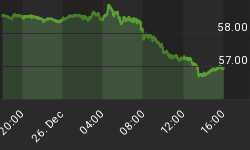5/6/2011 9:12:45 AM
Silver loses it's shine...
Recommendation:
Take no action.
Click here to access our stock chat rooms today! For a limited time, try our chat room for free. No subscription necessary to give it a try.
Stock Market Trends:

- ETF Positions indicated as Green are Long ETF positions and those indicated as Red are short positions.
- The State of the stock market is used to determine how you should trade. A trending market can ignore support and resistance levels and maintain its direction longer than most traders think it will. - The BIAS is used to determine how aggressive or defensive you should be with an ETF position. If the BIAS is Bullish but the stock market is in a Trading state, you might enter a short trade to take advantage of a reversal off of resistance. The BIAS tells you to exit that ETF trade on "weaker" signals than you might otherwise trade on as the stock market is predisposed to move in the direction of BIAS.
- At Risk is generally neutral represented by "-". When it is "Bullish" or "Bearish" it warns of a potential change in the BIAS.
- The Moving Averages are noted as they are important signposts used by the Chartists community in determining the relative health of the markets.
Best ETFs to buy now (current positions):
Short DIA at $124.63
Short SPY at $133.66
Short QQQ at $58.40
Click here to learn more about my services and for our best ETF portfolios.
Value Portfolio:
We hold no value positions at this time.
Daily Trading Action
The major index ETFs opened lower and immediately began to move higher. After the first half hour, much of the rest of the morning was spent in choppy trading. By late morning, the major indexes once again moved higher but that move was completed by noon and from that point on, the direction for U.S. markets would be lower. With a half hour left in the session, the major indexes rebounded from the day's low with the move higher lasting about fifteen minutes before settling in and with the major indexes finishing with sizable losses. The major indexes are all now in trading states. The Semiconductor Index (SOX 440.35 +0.65) bucked the trend and moved modestly higher on the day as market participants continue to "buy the dip". This left the Semiconductor Index closing just above its 20- and 50-Day Moving Averages (DMAs). The Russell-2000 (IWM 82.83 -0.38) logged a fractional loss. The Regional Bank Index (KRE 26.19 -0.22) posted a fractional loss while the Bank Index (KBE 25.29 -0.36) fell to a loss of -1.4%. The Finance Sector ETF (XLF 16.03 -0.21) posted a loss of -1.3%. Longer term Bonds (TLT 95.49 +0.90) posted a nearly one percent gain. It opened on its 400-DMA and moved higher from there sitting less than one dollar below its 200-DMA. NYSE trading volume was above average with 1.123B shares traded. NASDAQ share volume was above average with 2.230B shares traded.
In addition to the crude oil inventory report, there were four economic reports released:
- Initial Jobless Claims for last week came in at 474K versus an expected 400K
- Continuing Jobless Claims came in at 3.733M versus an expected 3.638M
- Productivity-Preliminary (Q1) rose 1.6% versus an expected 1.0% rise
- Unit Labor Costs (Q1) rose 1.0% versus an expected 0.8% rise
All four reports were released an hour before the open.
The U.S. dollar gained 1.5%, it's largest single day gain since August of 2010. The dollar has been stuck below its 20-DMA since mid-February. For a break-out to be signaled, it will have to break clearly above the 20-DMA.
Implied volatility for the S&P-500 (VIX 18.20 +1.12) rose nearly seven percent and the implied volatility for the NASDAQ-100 (VXN 19.12 +0.53) rose three percent.
The yield for the 10-year note fell five basis points to close at 3.17. The price of the near term futures contract for a barrel of crude oil fell -$9.44 (-8.6%) to close at $99.80. That is the largest one day drop in years.
All ten economic sectors in the S&P-500 moved lower led by Energy (-2.3%), Telecom (-1.3%), Materials (-1.2%), and Financials (-1.1%).
Market internals were negative with decliners leading advancers 9:5 on the NYSE and by 8:5 on the NASDAQ. Down volume led up volume nearly 7:3 on the NYSE and by nearly 3:2 on the NASDAQ. The index put/call ratio rose 0.03 to close at 1.46. The equity put/call ratio fell 0.08 to close at 0.64.
Commentary:
Thursday's trading again saw the market teeter on the edge but it has, thus far, refused to topple. With the semiconductors forging their way higher, it appears we are headed for a bounce before the downward move can be resumed. The semiconductors and Russell-2000 continue to remain above stubborn support of their 50-DMAs. Financials logged more significant losses than other equity indexes and continue to be relatively weak and are in downtrend states with BEARISH BIASes.
The bulls appear ready for one final run before market participants may succumb to the fear of being left without a chair when the music stops. We don't want to be stubborn bears, as this won't be profitable if the tide, once again begins to rise. We will remain with current positions until we can evaluate the expected bounce.
We hope you have enjoyed this edition of the McMillan portfolio. You may send comments to mark@stockbarometer.com.
















